第142章
Batchian is an island that would perhaps repay the researches of a botanist better than any other in the whole Archipelago. It contains a great variety of surface and of soil, abundance of large and small streams, many of which are navigable for some distance, and there being no savage inhabitants, every part of it can be visited with perfect safety. It possesses gold, copper, and coal, hot springs and geysers, sedimentary and volcanic rocks and coralline limestone, alluvial plains, abrupt hills and lofty mountains, a moist climate, and a grand and luxuriant forest vegetation.
The few days I stayed here produced me several new insects, but scarcely any birds. Butterflies and birds are in fact remarkably scarce in these forests. One may walk a whole day and not see more than two or three species of either. In everything but beetles, these eastern islands are very deficient compared with the western (Java, Borneo, &c.), and much more so if compared with the forests of South America, where twenty or thirty species of butterflies may be caught every day, and on very good days a hundred, a number we can hardly reach here in months of unremitting search. In birds there is the same difference. In most parts of tropical America we may always find some species of woodpecker tanager, bush shrike, chatterer, trogon, toucan, cuckoo, and tyrant-flycatcher; and a few days' active search will produce more variety than can be here met with in as many months.
Yet, along with this poverty of individuals and of species, there are in almost every class and order, some one, or two species of such extreme beauty or singularity, as to vie with, or even surpass, anything that even South America can produce.
One afternoon when I was arranging my insects, and surrounded by a crowd of wondering spectators, I showed one of them how to look at a small insect with a hand-lens, which caused such evident wonder that all the rest wanted to see it too. I therefore fixed the glass firmly to a piece of soft wood at the proper focus, and put under it a little spiny beetle of the genus Hispa, and then passed it round for examination. The excitement was immense. Some declared it was a yard long; others were frightened, and instantly dropped it, and all were as much astonished, and made as much shouting and gesticulation, as children at a pantomime, or at a Christmas exhibition of the oxyhydrogen microscope. And all this excitement was produced by a little pocket lens, an inch and a half focus, and therefore magnifying only four or five times, but which to their unaccustomed eyes appeared to enlarge a hundred fold.
On the last day of my stay here, one of my hunters succeeded in finding and shooting the beautiful Nicobar pigeon, of which I had been so long in search. None of the residents had ever seen it, which shows that it is rare and slay. My specimen was a female in beautiful condition, and the glassy coppery and green of its plumage, the snow-white tail and beautiful pendent feathers of the neck, were greatly admired. I subsequently obtained a specimen in New Guinea; and once saw it in the Kaióa islands. It is found also in some small islands near Macassar, in others near Borneo; and in the Nicobar islands, whence it receives its name.
It is a ground feeder, only going upon trees to roost, and is a very heavy fleshy bird. This may account far the fact of its being found chiefly on very small islands, while in the western half of the Archipelago, it seems entirely absent from the larger ones. Being a ground feeder it is subject to the attacks of carnivorous quadrupeds, which are not found in the very small islands. Its wide distribution over the whole length of the Archipelago; from extreme west to east, is however very extraordinary, since, with the exception of a few of the birds of prey, not a single land bird has so wide a range. Ground-feeding birds are generally deficient in power of extended flight, and this species is so bulky and heavy that it appears at first sight quite unable to fly a mile. A closer examination shows, however, that its wings are remarkably large, perhaps in proportion to its size larger than those of any other pigeon, and its pectoral muscles are immense. A fact communicated to me by the son of my friend Mr. Duivenboden of Ternate, would show that, in accordance with these peculiarities of structure, it possesses the power of flying long distances. Mr. D. established an oil factory on a small coral island, a hundred miles north of New Guinea, with no intervening land. After the island had been settled a year, and traversed in every direction, his son paid it a visit; and just as the schooner was coming to an anchor, a bird was seen flying from seaward which fell into the water exhausted before it could reach the shore. A boat was sent to pick it up, and it was found to be a Nicobar pigeon, which must have come from New Guinea, and flown a hundred miles, since no such bird previously inhabited the island.
This is certainly a very curious case of adaptation to an unusual and exceptional necessity. The bird does not ordinarily require great powers of flight, since it lives in the forest, feeds on fallen fruits, and roosts in low trees like other ground pigeons.